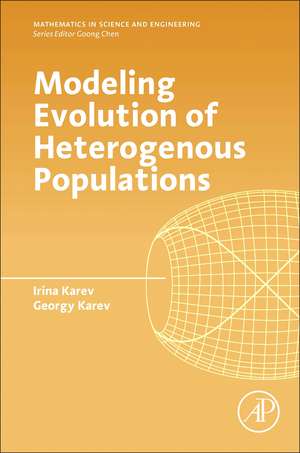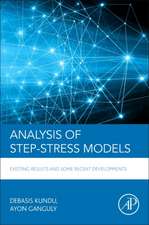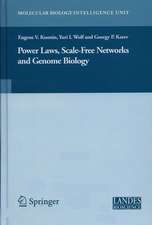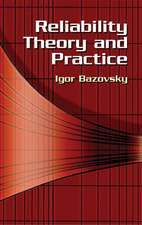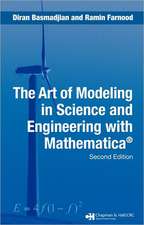Modeling Evolution of Heterogeneous Populations: Theory and Applications
Autor Irina Kareva, Georgy Kareven Limba Engleză Paperback – 17 oct 2019
- Introduces Hidden Keystone Variable (HKV) method, which allows modeling evolution of heterogenous populations, while reducing multi-dimensional selection systems to low-dimensional systems of differential equations
- Demonstrates that replicator dynamics is governed by the principle of maximal relative entropy that can be derived from the dynamics of selection systems instead of being postulated
- Discusses mechanisms behind models of both Darwinian and non-Darwinian selection
- Provides examples of applications to various fields, including cancer growth, global demography, population extinction, tragedy of the commons and resource sustainability, among others
- Helps inform differences in underlying mechanisms of population growth from experimental observations, taking one from experiment to theory and back
Preț: 689.98 lei
Preț vechi: 941.08 lei
-27% Nou
Puncte Express: 1035
Preț estimativ în valută:
132.03€ • 138.20$ • 109.89£
132.03€ • 138.20$ • 109.89£
Carte tipărită la comandă
Livrare economică 24 martie-07 aprilie
Preluare comenzi: 021 569.72.76
Specificații
ISBN-13: 9780128143681
ISBN-10: 0128143681
Pagini: 354
Dimensiuni: 191 x 235 mm
Greutate: 0.6 kg
Editura: ELSEVIER SCIENCE
ISBN-10: 0128143681
Pagini: 354
Dimensiuni: 191 x 235 mm
Greutate: 0.6 kg
Editura: ELSEVIER SCIENCE
Public țintă
Biological scientists looking to expand their mathematical modelling toolbox. Advanced graduate and 1st year PhD students. The areas of applicability of the method involve microbiology, ecology, population biology, cancer, social sciences, and infectious diseases, among othersCuprins
1. Using mathematical modeling to ask meaningful biological questions through combination of bifurcation analysis and population heterogeneity2. Inhomogeneous models of Malthusian type and the HKV method3. Some applications of inhomogeneous population models of Malthusian type4. Selection systems and the reduction theorem5. Some applications of the reduction theorem and the HKV methods6. Nonlinear replicator dynamics7. Inhomogeneous logistic equations and models for Darwinian and non-Darwinian evolution8. Replicator dynamics and the principle of minimal information gain9. Subexponential replicator dynamics and the principle of minimal Tsallis information gain10. Modeling extinction of inhomogeneous populations11. From experiment to theory: What can we learn from growth curves? 12. Traveling through phase-parameter portrait13. Evolutionary games: Natural selection of strategies14. Natural selection between two games with applications to game theoretical models of cancer15. Discrete-time selection systems16. Conclusions17. Moment-generating functions for various initial distributions
